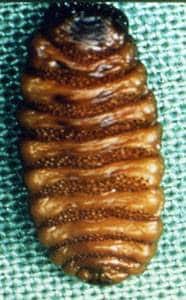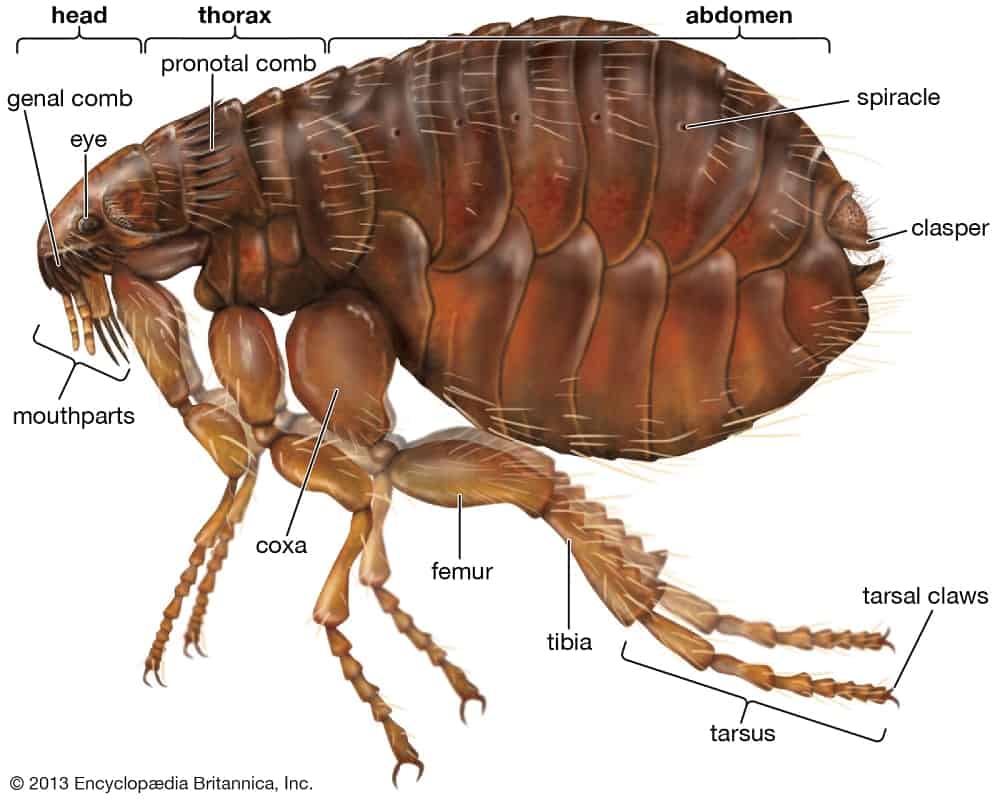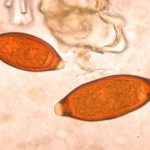 Cuterebriasis is caused by a fly called Cuterebra. The parasite infests small mammals that spend time outdoors, such as dogs, cats, rabbits, ferrets, squirrels, and rodents. Cuterebra are large non-feeding flies that lay eggs near animal burrows, nests, or vegetation. These opportunistic parasites do not seek out animals, but when an animal wanders by, the eggs attach and hatch in response to the host’s body heat. Infestation is most common in summer and fall.
Cuterebriasis is caused by a fly called Cuterebra. The parasite infests small mammals that spend time outdoors, such as dogs, cats, rabbits, ferrets, squirrels, and rodents. Cuterebra are large non-feeding flies that lay eggs near animal burrows, nests, or vegetation. These opportunistic parasites do not seek out animals, but when an animal wanders by, the eggs attach and hatch in response to the host’s body heat. Infestation is most common in summer and fall.
Infestations of the skin tend to occur around the head and neck because the animal has stuck its head near a burrow that contains the eggs. Once a larva hatches, it can be licked and swallowed during grooming, enter the body via the mouth or nostrils, or it may enter the body through an open wound. The larva causes a lesion in subcutaneous (below skin) tissue. The host acts like an incubator. The larva opens a tiny breathing hole (a fistula) in the skin. It just lives there, as though renting space; it does not feed on the host. An advanced-stage larva is the size of the first joint of your thumb and is a light tan color.
About a month after infestation, the Cuterebra larva crawls out of the skin and falls to the ground and pupates as the life cycle begins all over again. The length of time it stays in the ground depends on seasonal factors.
What pet owners typically see is the swelling at the air hole and matted hair from the pet’s over-grooming. Cats often groom to the point of irritation. Sometimes the pet has pain at the site. Some sites become infected and pus can be seen. Your veterinarian can diagnose cuterebriasis just by visual inspection of the lesion.
Treatment (removal of the larva) is one of the simplest things in veterinary medicine; your veterinarian will probe and enlarge the breathing hole, grasp the parasite with forceps, and just pull the invader out. Squeezing the lesion with your fingers can rupture the larva and cause an infection. The larva should be removed as a whole piece, rather than in parts, in order to reduce the pet’s body’s reaction. Typically, no other treatment is required, although sometimes the wound will need to be flushed with saline, debrided (unhealthy tissue removed), or covered with antibiotic ointment. Because of the “housing” that was created around the subcutaneous parasite, it may take longer to heal than you might expect, but it will heal.
Urban Animal Veterinary Hospital
1327 Yale St
Houston, TX 77008
(713) 863-008


